Company of Heroes 2 Single Player Preview
- Updated: 15th May, 2013
Company of Heroes 2 is finally, almost, a thing. One of the franchises I feared most for during THQ’s bankruptcy is nearly here, and I was given a hands-on, real-time, opportunity to play the single player campaign. At least 4 of the 5 first missions of the single player campaign. This preview will contain no spoilers to the campaign story arc, or specific characters involved. It will however mention specific mission objectives and locations, because that’s what actually happened in World War II. I believe that 70 odds years is a fair spoiler warning.
If you are a player who is only interested in the multiplayer then 1) you’re missing out, my friend. The single player is superb, and 2) you’ll be more interested in my multiplayer preview that you can read right here. It’s more or less the same level of written praise as this preview, only with different rationale.
Before breaking down the missions one-by-one, it’s worth pointing out that the Company of Heroes 2 single player campaign is genuinely excellent – at least the four missions I played are. Real-time strategy games sometimes fall short on single player in favour of more focus on the multiplayer, which while occasionally understandable can be somewhat disappointing if you dislike people and playing games with them.
CoH2’s campaign is varied, well written, and a great stepping-stone to get you into multiplayer with a fighting chance. Missions have a great range of tactics, objectives, and unit compositions required to complete. Even the easiest difficulty can be a struggle if you do not move, position, and forge your army correctly.
That is not to say the game is too hard, but rather that it is a good RTS game. Inexperienced players may find the learning-curve steeper than other big-budget RTS games at first, but within an hour any player will have the basics down and be planning ahead for their next engagement.
It’s a learning game with a terrific pay-off, once you hone your personal favourite skills and strategies to march your way to victory. Don’t however expect to mass infantry troops and charge-in using the attack command – your troops will be gunned-down faster than General Melchett’s in Black Adder.
Mission #1: Stalingrad. I confess to not having my hair blown back by the originality of the location, but you can blame historical accuracy for that. That is what comes of a World War II centred game. The mission is based around Operation Barbarossa; the German invasion of the Soviet Union. The actual event in history was the largest invasion in history, consisting of over 4,000,000 troops from the Axis powers doing the invading. Unsurprisingly the Soviets were outnumbered, and thus had to attempt to use superior tactics to fight the battle.
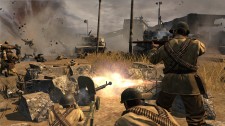 This mission was very heavily focussed on the idea of positioning units correctly, as you had a seemingly endless array of re-enforcements, and flanking techniques.
This mission was very heavily focussed on the idea of positioning units correctly, as you had a seemingly endless array of re-enforcements, and flanking techniques.
I found flanking to be the most effective strategy; sticking more to the outskirts of the map to avoid the majority of the enemies artillery and heavy armour. This was made much more challenging by CoH2’s line-of-sight feature – where you can only see parts of the maps your units have the ability to see – but it was satisfying and helped me increase my micromanaging skills with smaller infantry-based squads.
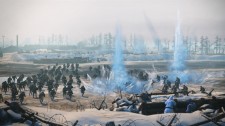 Mission #2: Moscow. This is where the Battle of Moscow first began, historically, and where I was tasked with evacuating civilians and protecting supplies. Far more fast-paced than the previous mission, with troops constantly pushing closer to my enclosed position and limited troops.
Mission #2: Moscow. This is where the Battle of Moscow first began, historically, and where I was tasked with evacuating civilians and protecting supplies. Far more fast-paced than the previous mission, with troops constantly pushing closer to my enclosed position and limited troops.
This was the mission that truly showed me the value of every individual trooper. If squads lose members, you can combine stragglers to merge squads together – this is useful because whether a squad has 1 trooper, or 6, it still counts as a squad in the game’s eyes and thus limits your number of available squads on the battlefield. I love entrenched warfare, and this mission gave me exactly that. Here is your army, you should lose, but you may not, fight. It’s the 300 mentality of gameplay, which I love in RTS games.
Mission #3: Mtsensk. A small town in the USSR that you are tasked with defending, and holding, with minimal troops. Unlike previous missions, this one had specific capture points which must be held or retaken if overrun by the enemy. The capture points give you supplies granting you the ability to have heavy armour for the first time – such as tanks and Jeeps.
The gameplay was very back-and-fourth, as there were three capture points and I struggled to manage my limited forces to defend all of them simultaneously, causing many points to be recaptured by both sides intermittently. The tanks were particularly fantastic to finally get to grips with, positioning them alongside small infantry and debris for ultimate effect.
This mission also had the first destructible scenery I experienced, as it was a snow-based map, there was a frozen river between the enemy line and the capture points where I was holding ground. Destroying the ice, through a combination of mines, artillery fire, and blind luck, helped me create bottlenecks. As well as sink some very important enemy tanks with the correct timing. It added an extra layer of potential strategy on top of the other thoughts going through my brain, which for any RTS is a plus in my books.
Mission #5: Stalingrad. I don’t know what happened in mission 4, as it was not available to play, but boy did this mission pick things up even more. Back in Stalingrad, but your commanding skills are now being put to the test. You’d better have been paying attention in the first missions, because now it’s down to all-out warfare.
There are 5 separate capture points, with 3 bridges giving access to them, and well as multiple, simultaneous, two-pronged attacks across them all throughout the mission. Infantry and heavy armour fighting on both sides. The mission took me a solid 40 minutes to complete and it felt like no time had passed. The pace is incredibly fast, almost entirely non-stop action, and to survive you will always have to be managing at least one capture point’s defences and mobilising re-enforcements. I was blown away at how much action was happening across the map at once, and possibly even more stunned at how I was able to manage it all.
Company of Heroes 2’s single player campaign has done more to make me feel like a commander than any other RTS game. The scenery, the troop management, the mission design, all brings the intensity and realism you could hope for in a World War II strategy game. It is not a game for the inexperienced.
However, any player unafraid of a heavily micro-management-based game, with a lot freedom of gameplay style will love it. Veteran RTS players owe it to themselves to give the campaign, and Company of Heroes 2 as a whole, the thorough once over it deserves. I’m extremely pleased that this franchise shall live on, and that it made me enthralled with a WWII game again.
Company of Heroes 2 is set to release exclusive for PC on June 25th.

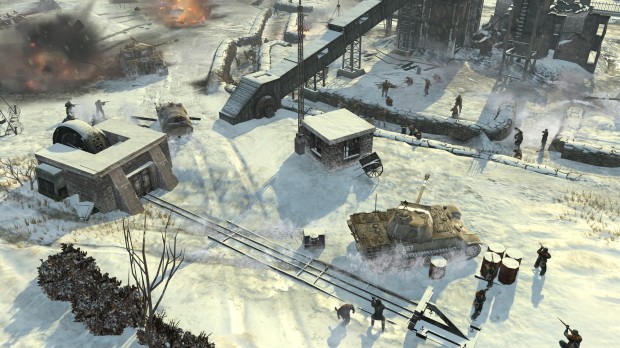
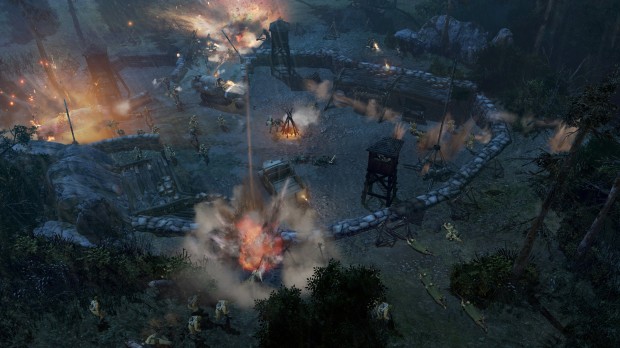
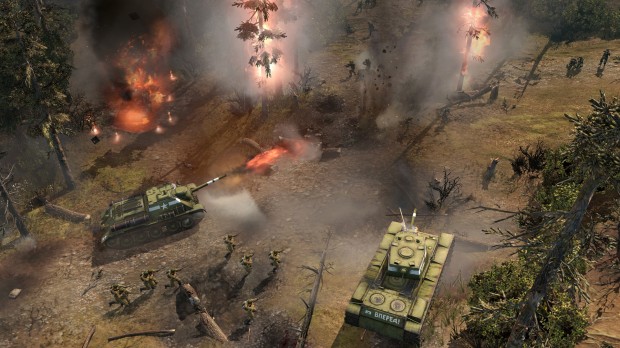
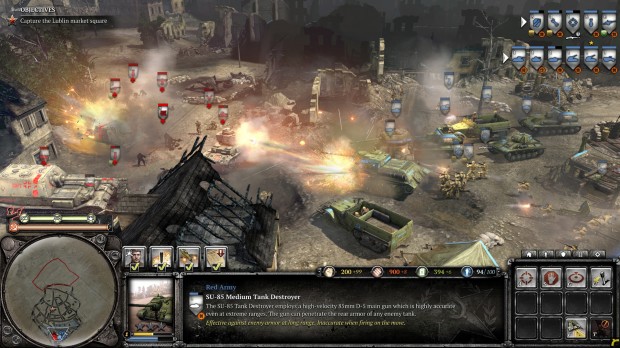
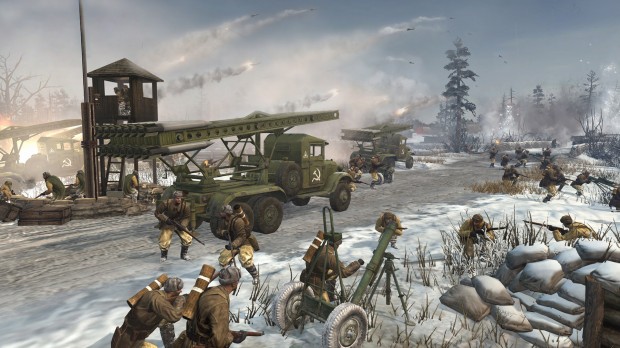
Follow Us!